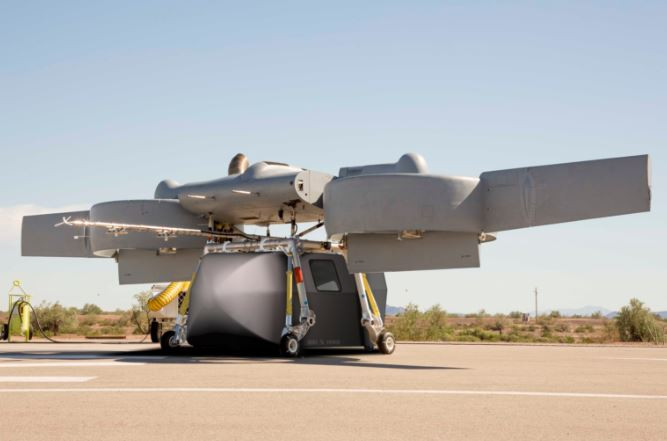The United States Air Force (USAF) a Piasecki Aircraft Corporation (PiAC), specializing in the design and manufacture of experimental helicopters and unmanned aerial vehicles, signed a $37 million contract to test two of its R&D programs: an integrated reconfigurable aerial system (ARES), a modular vehicle with vertical take-off and landing (VTOL) capability; and a hydrogen fuel cell propulsion system that will be integrated into the helicopter PA-890.
He executed the deal Afwerx, USAF innovation branch a Air Force Research Laboratory (AFRL), as a part Strategic Funding Enhancement Program (Stratfi).
Modular VTOL for multiple missions
ARES (Aerial Reconfigurable Embedded System) It is a modular, multi-purpose, vertical take-off and landing airborne system that features folding wings and can fly manned or unmanned in UAS mode. The vehicle is designed to provide integrated support C4I (Command, Control, Communications, Computing and Intelligence Center) and interfere with missions ISR (Intelligence, Surveillance and Reconnaissance), combat and logistical tasks for forces operating over long distances and in hostile terrain. This high flexibility is achieved thanks to a set of rapidly reconfigurable payload modules, the use of which reduces the total operating cost.
Piasecki produced a demonstration unit of this aircraft in cooperation with Lockheed Martin, through funding Defense Advanced Research Projects Agency (Darpa). With additional input from the US Air Force and Army, the company is integrating a flight control system Triplex fly-by-wire of Honeywell, begin flight testing of the platform later this year.
Hydrogen Electric Aviation
PiAC also works with the company ZeroAvia in the development and implementation of hydrogen fuel cell technology with a high-temperature proton exchange membrane (Hptem for its abbreviation in English). This technology will be integrated into the eVTOL PA-890, which will become the first helicopter using a hydrogen propulsion system capable of generating zero emissions.
The aircraft includes slow-rotor wings and is designed for operation in emergency medical services (EMS), high-value on-demand logistics (ODL), air transportation of mobile personnel on request (ODM) and other commercial applications. In addition to being a clean and environmentally friendly vehicle, the PA-890 enables a reduction in direct operating costs and generates less noise than conventional turbine helicopters.
According to the founder and CEO of ZeroAvia, Val Miftachov“High-temperature fuel cells are a critical technology to improve specific performance and unlock truly clean propulsion for larger fixed-wing aircraft, but will also enable helicopter and VTOL applications.”

